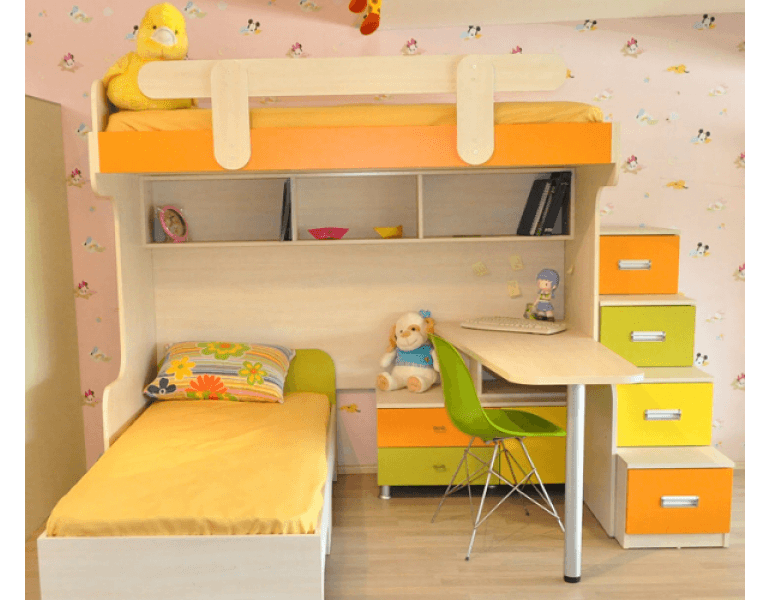You have multiple children who share rooms? It is necessary to produce smart solutions in homes where each child cannot enjoy their own space. Designing a pleasant and useful room that can meet the needs of both children at the same time and connect with their interests can be challenging but is well worth the effort. By taking advantage of these tips, you can make even a tiny room functional and nice-looking for your two children.
SAVE SPACE WITH FUNCTIONAL FURNITURE.
Kids need space to move and play. In order to minimize the loss of space in the children’s room, you need to minimize the space occupied by basic furniture. If your children agree, you can meet the need for two beds in a single bed area using bunk beds. While standard bunk beds are designed as two beds in a row, there are alternative designs that you can choose from.
You can create areas that your children can use both for sleeping and playing or studying with loft bunk beds. If the space is very small, it can be an advantageous choice for you to opt for functional bunk beds where the upper bed remains stationary and the lower bed turns into a work table. If the idea ofbunk beds is not what your children prefer or if you are anxious that there is a ladder in the children’s room, you can decide to get a trundle bed instead.
MAKE MORE SPACE FOR GAMES AND ACTIVITIES.
If you have reduced the space necessary for sleeping, the remaining space for games and activities is increased. To make the most of the remaining space, start by determining your children’s interests first.
For example, you can place a small spot for a child who loves basketball and the necessary instruments for another child who is interested in music in the room. Children need space where they can freely reflect their rich imagination. For this, give them suitable blank spaces and utensils. You can create a separate drawing area for your two children on one of the empty walls of the room. Thus, your children, who have the chance to express themselves freely, also learn that they must respect each other’s rights and not violate others’ space.
CREATE COMMON ACTIVITY AREAS.
Remember that your children also need spaces where they can spend time together. It is very important to give your children the ability to socialize. Being in constant dialogue with someone close to their age and playing games together makes a great contribution to the development of both children.
You don’t need complex game platforms or expensive playgrounds for this. Sometimes even a colorful play mat that you can lay on the floor can be enough to create an area where your children can spend time together. By declaring this colorful mat as a “collective event area,” you can also participate in your children’s games.
SEPARATE WORKSPACES.
Separating your children’s work areas is important to prevent distractions. Unlike adults, children who are always mobile and dynamic can be distracted much more quickly. In order to prevent them from interacting with each other when they need to work in the same room, it is useful to arrange the work areas of children so that they cannot see each other.
BE INSPIRED BY CHILDREN’S IMAGINATION.
When designing a children’s room, do not stick to the obsession with the simplicity of adults in their living spaces. The world of children is colorful and they want their living spaces arranged accordingly.
For example, you can offer your child who prefers a giraffe theme furniture in wood or green tones, and decorate the walls with safari-themed stickers.







